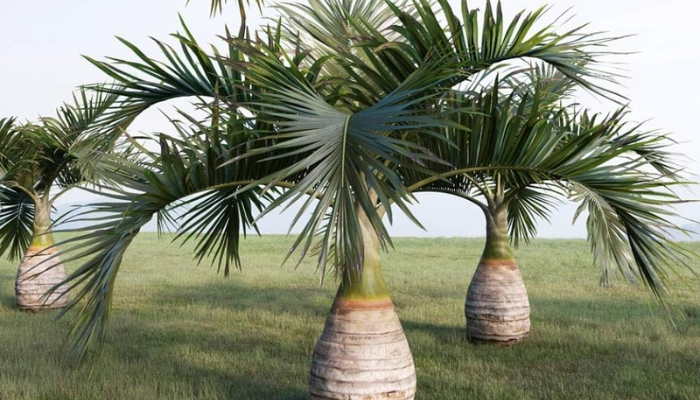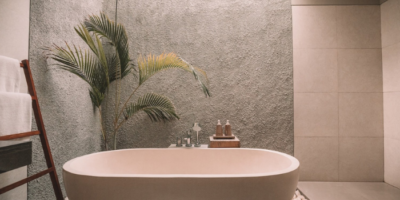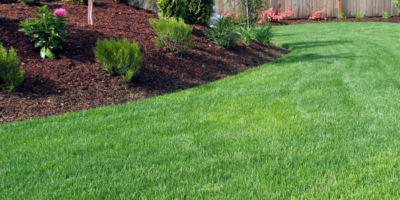The palm tree is often seen as a symbol of paradise, and it’s no surprise that this iconic tree can be found in the warmest, most luxurious parts of the world. But what about the most expensive palm trees? Just how much can you actually spend on a single palm tree? The answer may surprise you.
The Types of Palm Trees
There are many different types of palm trees around the world, but some of the most expensive palm trees are the ones that are rare and exotic. The most expensive types of palm trees come from the tropical and subtropical regions of the world, and they can be found in places like the Caribbean, South America, and even Asia.
Some of the most expensive palm trees include the Areca Palm, Coconut Palm, Canary Island Date Palm, and the Bismarck Palm. The Areca Palm is a popular and expensive variety of palm tree that is native to India and Sri Lanka.
It is known for its graceful, arching fronds and its tolerance to both drought and heat. The Coconut Palm is one of the most expensive and recognizable types of palm trees. It is native to tropical regions around the world and is known for its ability to produce coconuts.
The Canary Island Date Palm is another expensive species of palm tree that is native to the Canary Islands off the coast of Morocco. This tree is known for its large, umbrella-shaped fronds and its long lifespan.
Lastly, the Bismarck Palm is a type of palm tree that is native to Indonesia and is known for its unique, upright fronds and its ability to grow in a variety of climates. All of these types of palm trees are expensive because of their rarity and exoticism, making them highly sought after by landscapers and gardeners alike.
Characteristics of Palm Trees
Palm trees are known for being one of the most expensive trees to buy due to their size and characteristics. When it comes to the most expensive palm tree, it is typically the Canary Island Date Palm.
This palm tree is native to the Canary Islands and is known for its iconic look, with its long, spiky fronds that can reach up to 20 feet in length. The trunk is also thick and robust, which gives it an impressive look.
The Canary Island Date Palm is also known for its slow growth rate, which makes it difficult to cultivate. This slow growth rate is due to its need for more sunlight and water than other palm trees.
The Canary Island Date Palm is also one of the most expensive palm trees due to its rarity and the fact that it is difficult to cultivate. This palm tree is also considered to be a symbol of luxury and is often used as a landscaping feature.
Cost of Palm Trees
When it comes to buying palm trees for landscaping, many people assume that they come with a hefty price tag. However, the cost of palm trees can vary greatly depending on the type of tree and where it is purchased.
The most expensive palm tree is the Canary Island Date Palm, also known as the Phoenix canariensis. This exotic species of palm tree can cost anywhere from $150 to $1,500, depending on the size and condition of the tree.
The cost of this tree is due to its ability to withstand cold temperatures and its attractive foliage. It is also a popular choice for landscaping and can be found in many public parks and gardens. The Canary Island Date Palm is an excellent choice for those looking for a unique and hardy tree that will add a tropical touch to their landscape.
Factors that Determine the Cost of Palm Trees
When it comes to buying palm trees, the price tag can vary greatly depending on the variety and size of the tree. Factors that determine the cost of palm trees include the species, size, age, and condition.
Some of the most expensive palm trees are rare varieties that are difficult to find or have special characteristics. For example, the Medjool date palm is one of the most expensive palms due to its large size and sweet fruit.
The Canary Island date palm is also expensive because it is native to a small area and is a slow-growing species. The Queen’s palm is expensive because it takes a long time to grow and is not as easy to find.
Palm trees that are already mature can be quite costly, as they require more time and care to transplant and establish in a new environment. Other factors that can affect the cost of palm trees include the location of the seller, the condition of the tree, and the type of warranty that is offered.
Advantages of Planting Expensive Palm Trees
The advantages of planting expensive palm trees are numerous, and the cost of these trees is well worth the investment. Expensive palm trees provide a luxurious look to any landscape, while also being incredibly durable.
These trees are also resistant to pests and diseases and require very little maintenance. Additionally, expensive palm trees are fast-growing and can reach heights of up to 40 feet in as little as 5-7 years.
As a result, they can provide an instant impact on the landscape, adding a tropical feel to any space. In addition, these trees are able to withstand hot and dry climates, making them ideal for areas with extreme weather conditions.
Lastly, the cost of these trees is often offset by the long-term savings provided by their low maintenance requirements.
Disadvantages of Planting Expensive Palm Trees
When it comes to planting expensive palm trees, there are several disadvantages. First and foremost, these types of trees are often more prone to disease and pests. This can make them more difficult to maintain and can lead to costly treatments to keep them healthy.
Additionally, expensive palm trees can be more challenging to prune and maintain, as their leaves may be more delicate than some other plants. Furthermore, these trees may require more maintenance to protect them from the elements, leading to higher costs.
Finally, due to their high price, the loss of an expensive palm tree can be a financial hardship. Thus, if you are looking to add a luxurious touch to your landscape, it is important to be aware of the potential risks and costs associated with planting an expensive palm tree.
Alternatives to Expensive Palm Trees
When it comes to having a beautiful palm tree in your home or garden, it can be tempting to spend extra money on the more expensive varieties. But not everyone has the budget for the most expensive palm trees, and there are alternatives.
One of these is to opt for a more affordable variety of palm trees, such as a Phoenix dactylifera, or date palm. Date palms are hardy, drought-tolerant, and relatively low-maintenance. They can be kept in containers, and they can survive in temperatures as low as 15°F.
Additionally, they have a lifespan of up to 200 years, so they can stay with you for a long time. Another option is to look for palm trees that are native to your region. These trees are already adapted to the climate and soil conditions of the area, so they require less effort to maintain. They will also be relatively inexpensive, as they can be found in local nurseries.
Finally, you can also look for more ornamental varieties of palm trees, such as the Trachycarpus fortunei, or Chinese windmill palm. These trees tend to be smaller and require less maintenance than other varieties, making them a good option for those on a budget.
Conclusion
The most expensive palm tree is a rare and exotic species that has a unique history and many uses. It is a great investment for any collector, as it is a symbol of wealth and luxury. The price of these trees can vary greatly, depending on the species, age, and size.
Although the most expensive species will cost you a pretty penny, these trees are worth the investment if you are looking for a way to make your property more luxurious. With proper care and maintenance, these trees will provide you with years of beauty and relaxation.





















Comments